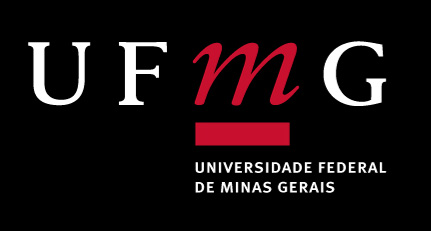Remote sensing techniques for temporal analysis of the Lagoa Grande water mirror in the city of Sete Lagoas – MG
DOI:
https://doi.org/10.35699/2237-549X.2021.25893Keywords:
Remote sensing, geotechnology, spatio-temporal analysis, water resourceAbstract
In recent years, many studies have been developed on the pressures that water bodies have been suffering due to urbanization, industrialization and other uses that directly and indirectly impact the quality of these natural resources. The lake surfaces play an important role in the environmental quality of urban areas and neighborhoods. The municipality of Sete Lagoas is characterized by low availability of surface water, so urban water consumption (residential, industrial and other uses) is obtained almost entirely (about 95%) from underground wells. Water recharge areas are extremely important for maintaining this water extraction. Lagoa Grande is a perennial lake body that has had a decrease in its water mirror in the last ten years, worsening significantly in the last five years. This work aims to demonstrate such reduction using remote sensing resources combined with statistical analysis, in order to explore the potential of these methodologies in monitoring environmental variables. The results obtained by application of remote sensing images proved to be efficient in detecting the decrease of water mirror in Lagoa Grande. During the study period (2008 to 2018), a significant reduction in the area of Lagoa Grande was identified in comparison with the other lagoons that compose the study (decrease of the water mirror in the order of 81%).
Downloads
References
AQUINO, C.M.S.; VALLADARES, G.S. Geografia, Geotecnologias e Planejamento Ambiental. Geografia (Londrina), Londrina, v.22, n.1, p. 117 – 138, jan/abr, 2021.
BERBERT-BORN, M.L.C. Geoquímica dos sedimentos superficiais de lagoas da região cárstica de Sete Lagoas-Lagoa Santa (MG), e os indícios de interferências antrópicas. 1998. Dissertação (Mestrado em Geoquímica Ambiental) – Escola de Minas, Universidade Federal de Ouro Preto, Ouro Preto.
CHEN, F.; ZHAO, X.; YE, H. Making Use of the Landsat 7 SLC-off ETM+ Image Through Different Recovering Approaches. In KARAKEHAYOV, Z. (Ed.). Data Acquisition Applications. London: IntechOpen, 2012. Cap.13, p.317-342.
GUIMARÃES, V. M. B. Estudo acerca das possíveis causas para o decréscimo do volume hídrico na Lagoa Grande no município de Sete Lagoas – MG. 2015. Monografia (Graduação em Geografia) – Departamento de Geografia, Universidade Federal de Viçosa, Viçosa.
INSTITUTO BRASILEIRO DE GEOGRAFIA E ESTATÍSTICA (IBGE). Censo Brasileiro de 2010. Rio de Janeiro: IBGE, 2012.
INSTITUTO NACIONAL DE METEOROLOGIA. Banco de dados meteorológicos para ensino e pesquisa. Brasília: INMET, 2016. Disponível em: <http://www.inmet.gov.br/projetos/rede/pesquisa/>. Acesso em: 07 jul. 2016.
INSTITUTO NACIONAL DE PESQUISAS ESPACIAIS. Manual do SPRING: Tutorial de Geoprocessamento. São José dos Campos: INPE, 2012. Disponível em: <http://www.dpi.inpe.br/spring/portugues/tutorial/classific.html>. Acesso em: 18 jun. 2018.
KARMANN, I. Ciclo da Água, Água subterrânea e sua ação geológica. In TEIXEIRA, W. et al. (Org.). Decifrando a Terra. São Paulo: Oficina de Textos, 2000. Cap.7, p.114-136.
LANDAU, E.C.; OLIVEIRA, R.P.C. de.; SANTOS, M.A. dos.; GUIMARÃES, D.P. Expansão Urbana da Cidade de Sete Lagoas/MG entre 1949 e 2010. In: SIMPÓSIO BRASILEIRO DE SENSORIAMENTO REMOTO – SBSR, 15, 2011, Curitiba: INPE, 2011, p. 4011-4016.
NATIONAL AERONAUTICS AND SPACE ADMINISTRATION. Landsat 8. Washington, 2016. Disponível em: <http://landsat.gsfc.nasa.gov/?p=3186>. Acesso em: 11 jul. 2016.
NOGUEIRA, M. Sete Lagoas: a dinâmica funcional de uma cidade média e sua inserção na rede urbana de Minas Gerais. Boletim Goiano de Geografia, Goiânia, v.25, n.1, p.47-60, 2005.
NOVO, E. M. L. M.; TUNDISI, J. G. Sensoriamento remoto de águas interiores: Perspectivas. In: SIMPÓSIO BRASILEIRO DE SENSORIAMENTO REMOTO, V, 1988, Natal: INPE/SELPER, 1988, p.13-21.
PINTO, C. E. T.; MENEZES P. H. B. J.; MARTINEZ, J.M; ROIG, H. L.; VILLAR, R. A. E. Uso de imagens MODIS no monitoramento do fluxo de sedimentos no reservatório de Três Marias. Revista Brasileira de Engenharia Agrícola e Ambiental, Campina Grande, v.18, n.5, p.507–516, 2014.
R CORE TEAM. R: A language and environment for statistical computing. Viena: R Foundation for Statistical Computing, 2015.
RIBEIRO, W.C.; SOUZA, J.B.; PAULO, G.L.; BARROSO, L.C. Tipologia e hierarquização da microrregião de Sete Lagoas – MG. Revista da Casa da Geografia de Sobral (RCGS), Sobral – CE, v. 15, n. 2, p. 84 – 108, 2013.
SOUZA, F.P.; AZEVEDO, J.P.S. Panorama das lagoas urbanas no Rio de Janeiro: aspectos relevantes na gestão das Lagoas Rodrigo de Freitas, Araruama e Complexo Lagunar de Jacarepaguá. Engenharia Sanitária e Ambiental, v.25 n.1, p. 197 – 204. Jan/fev 2020.
TABACHNICK, B. G.; FIDELL, L. S. Experimental designs using ANOVA. Belmont, CA: Thomson/Brooks/Cole, 2007.
Downloads
Published
Versions
- 2022-04-15 (2)
- 2021-07-02 (1)
How to Cite
Issue
Section
License
Copyright (c) 2021 Fernanda Mara Coelho Pizani, Max Paulo Rocha Pereira, Matheus Miranda Silva, Marcos Antônio Timbó Elmiro

This work is licensed under a Creative Commons Attribution 4.0 International License.
Os artigos desta revista obedecem a licença Creative Commons — Attribution 4.0 International — CC BY 4.0









